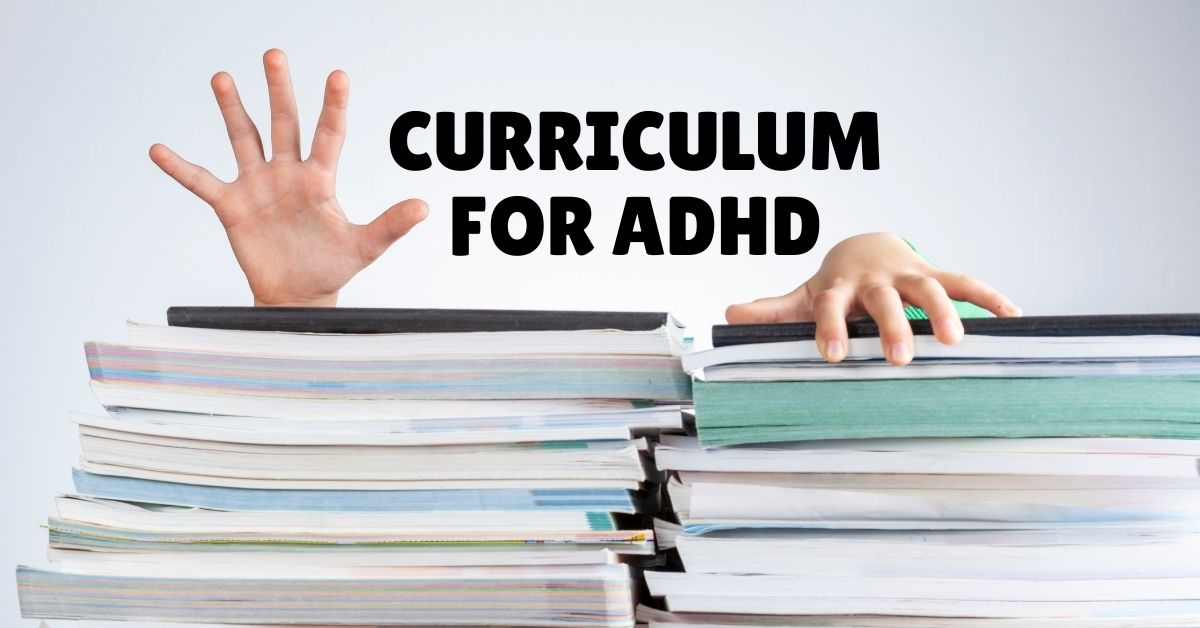Choosing the right curriculum for a child with ADHD can be both an exciting and daunting task. Traditional methods often overlook the unique needs of children with ADHD, leaving parents to search for alternatives that truly cater to their child’s strengths and challenges. Fortunately, homeschooling provides the flexibility and customization needed to create a supportive and effective learning environment.
This blog will explore the best curriculum for ADHD children, highlight ADHD-friendly homeschool programs, and provide insight into curriculum options for children with ADHD to help parents create a thriving educational experience.
Understanding ADHD in the Learning Space
ADHD, or Attention Deficit Hyperactivity Disorder, affects a child’s ability to focus, regulate impulses, and manage energy levels. These traits can make traditional, one-size-fits-all classrooms overwhelming and frustrating.
Homeschooling offers a unique opportunity to design an ADHD-friendly learning environment. Parents can remove distractions, build in movement when needed, and create lessons that work with—not against—their child’s natural energy patterns.
For example, a child with excess energy may thrive with lessons that incorporate frequent movement, like acting out historical events or using hands-on science experiments. Breaking lessons into short, focused segments with regular breaks can also help maintain attention and motivation.
Key takeaway: The best curriculum for ADHD child takes into account their need for flexibility, engaging activities, and a tailored approach that meets their specific strengths and challenges.
How to Tailor Curriculum to ADHD Needs
To create an effective homeschool curriculum for a child with ADHD, focus on these principles:
- Maintain Structure with Flexibility
Children with ADHD often do better with some structure in their day, but they also need the freedom to explore topics in creative ways. Look for programs that offer a flexible structure, allowing you to adjust pace and method based on your child’s needs. Modular curriculums, which break lessons into stand-alone units, work well for this purpose.
- Use Multi-Sensory Learning Techniques
Engaging multiple senses can make lessons more impactful. For instance, instead of just reading about geography, try using a tactile map or building three-dimensional models. Activities like painting, music lessons, or even cooking reinforce what they’ve learned while keeping your child actively involved.
- Incorporate Movement and Breaks
Frequent short breaks can boost focus and reduce overwhelm. During lessons, incorporate movement by using physical activities to reinforce topics, such as walking a “timeline” of historical events or jumping between math questions drawn on the sidewalk!
- Harness Technology and Interactive Tools
Many ADHD-friendly homeschool programs include digital resources or gamified elements to make learning fun and engaging. Platforms that provide interactive quizzes, videos, or virtual lessons can work wonders for maintaining focus.
- Build Self-Regulation and Life Skills
Including lessons that teach organization, time management, and emotional regulation alongside academics empowers children with ADHD to succeed beyond the classroom, providing valuable skills for daily life.
Pro tip: Customize, observe, and adapt. Experiment with what works for your child, and don’t be afraid to switch gears if something isn’t clicking.
ADHD-Friendly Curriculum Options
When searching for curriculum options for children with ADHD, look for programs specifically designed or easily adaptable for their needs. Below are some popular options to consider:
Multisensory Curriculum Program: Programs that emphasize hands-on, sensory-rich learning help ADHD children stay engaged. For example:
- Math-U-See: Uses manipulatives to teach math concepts visually and kinesthetically.
- All About Reading/Writing: Incorporates interactive activities and tools to address varying learning styles.
Project-Based Learning: Children with ADHD often thrive with project-based approaches that connect learning to real-world experiences. Programs like lapbooks, unit studies, or creating crafts related to specific lessons promote exploration while building independence.
Technology-Assisted Learning Platforms: Digital curriculums like Time4Learning or Prodigy adapt to a child’s pace and integrate gamification to transform challenging lessons into exciting adventures.
Blended Approaches: Combine traditional and online options for a more dynamic curriculum. Mix physical books or worksheets with online interactive tools to cater to various interests and avoid monotony.
Executive Function Skill Builders: Programs like BrainWare Safari or workbooks focused on planning and organizing can help children with ADHD improve executive functioning skills, which are often areas of difficulty.
Pro Tip: When choosing curricula, sample various programs to discover what works. Many homeschool companies offer free trials or demos, so you can try before committing!
How Life Skills Make a Difference
The best curriculum for ADHD children focuses not only on academics but also on practical life skills. Consider integrating the following life-skill lessons into your homeschooling routine:
- Time Management: Teach children how to use visual timers or checklists to manage study sessions effectively.
- Organization: Help them keep their schoolwork tidy with color-coded folders, labeled bins, and step-by-step organizational habits.
- Social Skills Training: Role-playing conflict resolution or engaging in group projects helps improve teamwork and emotional regulation.
- Healthy Routines: Encouraging regular physical activity, mindfulness, and breaks supports your child’s emotional and mental well-being while reinforcing focus.
These life skills will not only help children academically but also foster independence, resilience, and confidence over time.

Social Interaction in Homeschooling
One common misconception about homeschooling children with ADHD is that it limits social opportunities. The truth? Homeschooling can offer rich socialization experiences when done thoughtfully.
Join:
- Local homeschooling co-ops for field trips and shared lessons.
- Sports leagues, art classes, or music groups to build peer connections.
- Online forums for virtual meetups during collaborative learning projects.
ADHD-friendly homeschool programs often encourage group activities, which foster social growth as well as cooperative learning.
Creating a Balanced Curriculum
Homeschooling a child with ADHD offers an incredible opportunity to create a stress-free, customized educational experience. By mixing academics, creativity, and life skills, parents can help their children thrive both inside and outside the classroom.
Remember these tips for crafting the perfect curriculum options for children with ADHD:
- Keep lessons varied, dynamic, and sensory-rich.
- Incorporate frequent breaks to reset energy and focus.
- Balance structured routines with freedom for exploration and creativity.
Most importantly, remain patient and persistent. Homeschooling a child with ADHD often requires trial and error, but the result is a learning environment where your child can truly flourish.
With flexibility, the right tools, and a positive mindset, you can choose the best curriculum for ADHD children and set them on the path to academic achievement and lifelong success.
Above all, homeschooling is a collaborative process. Explore ADHD-friendly homeschool programs, connect with communities for resources and support, and enjoy the rewarding process of helping your child learn and grow!



